This article was co-authored by Lydia Shedlofsky, DO. Dr. Lydia Shedlofsky is a Resident Dermatologist who joined Affiliated Dermatology in July of 2019 after completing a traditional rotating internship at Larkin Community Hospital in Miami, Florida. She earned a Bachelor of Science in Biology at Guilford College in Greensboro, North Carolina. After graduation, she moved to Beira, Mozambique, and worked as a research assistant and intern at a free clinic. She completed a Post-Baccalaureate program and subsequently earned a Master's Degree in Medical Education and a Doctorate of Osteopathic Medicine (DO) from the Lake Erie College of Osteopathic Medicine.
There are 27 references cited in this article, which can be found at the bottom of the page.
wikiHow marks an article as reader-approved once it receives enough positive feedback. In this case, 100% of readers who voted found the article helpful, earning it our reader-approved status.
This article has been viewed 187,369 times.
Impetigo is a common superficial bacterial skin infection, most commonly seen in children. It is easily spread in close quarters and is very contagious, so it can be passed in places such as schools and day cares. [1] [2] Impetigo is commonly known as School Sores in New Zealand and Australia. Because it is spread by contact, impetigo is also commonly seen in people participating in contact sports, such as wrestling. This skin rash can become more serious, so you do want to get it treated as soon as possible.
Steps
Understanding the Condition
-
1Look for red sores. Non-bullous impetigo is the most common type of the disorder, and it manifests with tiny blisters that become red sores on the skin. These sores are filled with a yellow or honey-colored fluid. After a few days, these sores rupture and ooze pus for several days.[3]
- After a few days, the blisters will turn into into brownish crusted areas.
- The sores are most commonly found around the mouth or nose, but they may also occur on other areas of the body such as the arms and hands.
-
2Look on the body for larger blisters. Bullous impetigo is a less common form of impetigo, usually caused by the bacteria S. aureus. It creates larger blisters that are less likely to burst.[4]
- The blisters in bullous impetigo may be found on the chest, abdomen, and diaper area of young children and babies.[5]
Advertisement -
3Check the leg area. A third, more severe type of impetigo is ecthyma, which is often caused by Streptococcus bacteria. It may also be caused by Staphylococcus or "staph" bacteria. It often begins on the legs.[6]
- Ecthyma is sometimes called "deep impetigo" because its symptoms are similar to other types of impetigo, but they occur deeper into the skin.
- Look for small, red-bordered blisters. These blisters are often filled with pus and may look like they're very deep in the skin. After the blisters burst, you will see ulcers with thick, brownish-black crusts.[7] This type of impetigo is much more painful.
- The ulcers from ecthyma will look "punched out" (well defined) around the borders, and the surrounding skin is often red and calloused.[8] Unlike blisters, these ulcers will not heal or go away on their own.
-
4Visit the doctor. If you think you or your child has impetigo, the best course of action is to visit the doctor. The doctor can help ascertain that the rash on you or your child is, in fact, impetigo, as well as prescribe you the best medication.[9]
-
5Avoid touching it. The rash is extremely contagious, so try to avoid touching the rash if possible. Wash your hands with antibacterial soap if you do touch the rash.[10]
- This rash is often caused by variations of the staphylococcus bacteria (staph), which is why it is so contagious. However, it can also develop from the streptococcal (strep) bacteria, as well, which is also contagious.[11]
Treating Impetigo
-
1Soak the area to remove scabs. To help apply treatments, you may need to remove the top brown scabs first. Press a warm, wet cloth to the area for a few minutes, or soak the area in warm water to soften them. Gently rub the area with a wet, soapy washcloth when done, and rinse with water.[12]
- Be sure to keep the washcloth separate from other people, as it can pass the rash.
-
2Apply antibiotic ointment.[13] Antibiotic ointment is usually the first treatment option for impetigo, and your doctor will prescribe the best one for your rash. Put on gloves or a finger cot before applying the ointment. Rub the ointment on the affected area.[14]
- If you do not have gloves, be sure to thoroughly wash your hands when you are done applying the ointment.
- Your doctor may prescribe a topical antibiotic such as mupirocin, retapamulin, or fusidic acid.[15]
-
3Take antibiotic pills if prescribed. The other common treatment option for impetigo is an oral antibiotic. Usually, you take an antibiotic pill once or twice a day, with food, for up to 10 days.[16]
- Your doctor will probably prescribe a topical antibiotic first, unless you have an extensive or resistant rash. Resistance to oral antibiotics is becoming a problem, so doctors tend not to prescribe them unless absolutely necessary.[17]
- Your doctor will likely prescribe an oral antibiotic such as dicloxacillin or cephalexin. If you are allergic to penicillin, she may prescribe clindamycin or erythromycin.
-
4Always take the medication for the allotted time. Whether you are on pills or cream, follow your doctor's instructions for how long you should take it. Even if you seem to be better, the bacteria may not be completely gone, and it can come back worse if you don't finish out your medication.[18]
-
5Don't scratch sores. While it can be tempting to scratch the sores, it can also make the rash worse. It can spread the rash across your body or to another person.[19]
-
6Know when to see a doctor again. If you still have the rash after 7 days and it isn't showing signs of healing, you should return to your doctor, as he or she may need to give you a different antibiotic.[20]
-
7Be aware of potential complications. While this rash is usually not serious, it can cause rare complications. For instance, the strep version can lead to a rare disease, poststreptococcal glomerulonephritis, which can harm the kidneys. If anyone with impetigo has dark urine, you should go back to the doctor to discuss the problem.[23] Other complications include:[24]
- Scarring, especially from ecthyma impetigo.
- Cellulitis, which is a serious infection that affects tissues beneath your skin.
- Guttate psoriasis, a non-infectious skin condition that causes scaly patches on the skin.[25]
- Scarlet fever, a rare bacterial infection that may develop from a streptococcus impetigo infection in some cases.
- Septicemia, a bacterial blood infection that requires immediate medical attention
- Staphylococcal scalded skin syndrome (SSSS), a serious but rare skin poisoning caused by the staph bacteria.
Limiting Risk Factors
-
1Avoid other people. In the first couple of days of infection, especially, it's a good idea to stay home from work or to keep your child home from school or daycare.[26] You remain contagious for up to 2 days after starting treatment.
- Children can return to school 24 hours after antibiotic treatment has started. Cover all impetigo sores with a watertight dressing, and make sure the child keeps them covered while at school.[27]
-
2Wash your hands regularly. Encourage children to wash their hands as well. Use clean, running water and soap to wash your hands frequently throughout the day. If soap is not available, use a hand sanitizer with at least 60% alcohol.[28]
- The CDC recommends that you wash your hands for at least 20 seconds, or about the time it takes to sing "Happy Birthday" twice through.[29]
- Good handwashing hygiene can help avoid the spread of impetigo. Any contact with the discharge from the sores can pass the rash. Nasal discharge can also pass the rash. Washing your hands frequently reduces the likelihood of spreading discharge around.[30]
-
3Dry out your home. Impetigo is easier to spread when the environment is wet and humid.[31] Air conditioners already take some of the humidity out of the air of your home, but if you live in an especially humid climate, you might want to invest in a dehumidifier for your home.
-
4Cover cuts and scrapes. The easiest way for impetigo to enter your body is through a cut or scrape. If you or your loved one has cuts, be sure to cover them up with band-aids or clean gauze to provide protection.[32]
-
5Don't share with a person who has impetigo. Whether you have impetigo or someone you know does, make sure that person keeps her towels and clothes to herself and doesn't share with other people in the family. It's easy to pass the rash if cloth has been rubbed on the infected area.[33]
Expert Q&A
-
QuestionWhy does my impetigo keep coming back every few weeks? What can I do to stop it?
 Chris M. Matsko, MDDr. Chris M. Matsko is a retired physician based in Pittsburgh, Pennsylvania. With over 25 years of medical research experience, Dr. Matsko was awarded the Pittsburgh Cornell University Leadership Award for Excellence. He holds a BS in Nutritional Science from Cornell University and an MD from the Temple University School of Medicine in 2007. Dr. Matsko earned a Research Writing Certification from the American Medical Writers Association (AMWA) in 2016 and a Medical Writing & Editing Certification from the University of Chicago in 2017.
Chris M. Matsko, MDDr. Chris M. Matsko is a retired physician based in Pittsburgh, Pennsylvania. With over 25 years of medical research experience, Dr. Matsko was awarded the Pittsburgh Cornell University Leadership Award for Excellence. He holds a BS in Nutritional Science from Cornell University and an MD from the Temple University School of Medicine in 2007. Dr. Matsko earned a Research Writing Certification from the American Medical Writers Association (AMWA) in 2016 and a Medical Writing & Editing Certification from the University of Chicago in 2017.
Family Medicine Physician First line therapy for impetigo is triple-strength antibiotic therapy, bacitracin-polymyxin-neomycin, or mupirocin. Other treatments include first generation cephalosporin such as Keflex. Dicloxacillin is also a good treatment.
First line therapy for impetigo is triple-strength antibiotic therapy, bacitracin-polymyxin-neomycin, or mupirocin. Other treatments include first generation cephalosporin such as Keflex. Dicloxacillin is also a good treatment. -
QuestionMy impetigo keeps getting bigger and bigger. I already took antibiotics, plus a topical ointment, but it still won't go away. What's the best way to heal my impetigo fast?
 Chris M. Matsko, MDDr. Chris M. Matsko is a retired physician based in Pittsburgh, Pennsylvania. With over 25 years of medical research experience, Dr. Matsko was awarded the Pittsburgh Cornell University Leadership Award for Excellence. He holds a BS in Nutritional Science from Cornell University and an MD from the Temple University School of Medicine in 2007. Dr. Matsko earned a Research Writing Certification from the American Medical Writers Association (AMWA) in 2016 and a Medical Writing & Editing Certification from the University of Chicago in 2017.
Chris M. Matsko, MDDr. Chris M. Matsko is a retired physician based in Pittsburgh, Pennsylvania. With over 25 years of medical research experience, Dr. Matsko was awarded the Pittsburgh Cornell University Leadership Award for Excellence. He holds a BS in Nutritional Science from Cornell University and an MD from the Temple University School of Medicine in 2007. Dr. Matsko earned a Research Writing Certification from the American Medical Writers Association (AMWA) in 2016 and a Medical Writing & Editing Certification from the University of Chicago in 2017.
Family Medicine Physician If may take up to seven to 10 days for it to heal properly. The is no ultra-fast treatment. Sounds like you are getting a strong treatment — I would stick with that. If you do not notice any difference in seven days, make an appointment with your doctor to be re-evaluated.
If may take up to seven to 10 days for it to heal properly. The is no ultra-fast treatment. Sounds like you are getting a strong treatment — I would stick with that. If you do not notice any difference in seven days, make an appointment with your doctor to be re-evaluated.
References
- ↑ Lydia Shedlofsky, DO. Dermatologist. Expert Interview. 30 September 2020.
- ↑ https://www.cdc.gov/groupastrep/diseases-public/impetigo.html
- ↑ https://medlineplus.gov/ency/article/000860.htm
- ↑ https://www.kidshealth.org/en/parents/impetigo.html
- ↑ https://dermnetnz.org/topics/impetigo
- ↑ https://medlineplus.gov/ency/article/000864.htm
- ↑ https://www.merckmanuals.com/professional/dermatologic-disorders/bacterial-skin-infections/impetigo-and-ecthyma
- ↑ https://dermnetnz.org/topics/ecthyma
- ↑ https://www.aad.org/public/diseases/a-z/impetigo-treatment
- ↑ https://www.aad.org/public/diseases/a-z/impetigo-self-care
- ↑ https://www.healthychildren.org/English/health-issues/conditions/skin/pages/Impetigo-Care.aspx
- ↑ https://www.nhs.uk/conditions/impetigo/
- ↑ Lydia Shedlofsky, DO. Dermatologist. Expert Interview. 30 September 2020.
- ↑ https://www.kidshealth.org/en/parents/impetigo.html
- ↑ http://www.merckmanuals.com/professional/dermatologic-disorders/bacterial-skin-infections/impetigo-and-ecthyma
- ↑ https://www.kidshealth.org/en/parents/impetigo.html
- ↑ http://www.merckmanuals.com/professional/dermatologic-disorders/bacterial-skin-infections/impetigo-and-ecthyma
- ↑ http://kidshealth.org/parent/infections/skin/impetigo.html#
- ↑ https://www.aad.org/public/diseases/a-z/impetigo-self-care
- ↑ http://www.nhs.uk/Conditions/Impetigo/Pages/Treatment.aspx
- ↑ http://www.merckmanuals.com/professional/dermatologic-disorders/bacterial-skin-infections/impetigo-and-ecthyma
- ↑ https://www.cdc.gov/mrsa/index.html
- ↑ http://www.healthychildren.org/English/health-issues/conditions/skin/pages/Impetigo-Care.aspx
- ↑ https://www.nhsinform.scot/illnesses-and-conditions/infections-and-poisoning/impetigo#complications-of-impetigo
- ↑ https://dermnetnz.org/topics/guttate-psoriasis/
- ↑ https://www.health.nsw.gov.au/Infectious/factsheets/Pages/impetigo.aspx
- ↑ http://ideas.health.vic.gov.au/bluebook/impetigo-info.asp#when
- ↑ http://www.cdc.gov/handwashing/when-how-handwashing.html
- ↑ http://www.cdc.gov/handwashing/when-how-handwashing.html
- ↑ https://www.cdc.gov/groupastrep/diseases-public/impetigo.html
- ↑ https://www.hopkinsmedicine.org/health/conditions-and-diseases/impetigo
- ↑ https://www.nationwidechildrens.org/conditions/impetigo
- ↑ https://myhealth.alberta.ca/Health/aftercareinformation/pages/conditions.aspx?hwid=abq1873
- ↑ https://kidshealth.org/en/parents/impetigo.html
- ↑ https://kidshealth.org/en/parents/impetigo.html
- ↑ https://www.fda.gov/consumers/consumer-updates/how-treat-impetigo-and-control-common-skin-infection
About This Article
To cure impetigo, avoid touching or scratching the affected area and see your doctor as soon as possible to get antibiotics. If your doctor gives you topical antibiotic cream to treat your rash, it helps to soak the affected area with warm water and gently remove the brown scabs with a wet washcloth before applying the medication. Be sure to apply or take your antibiotics exactly as prescribed and complete the entire course of medication for the best results! To learn more about preventing the spread of this contagious rash, read on!

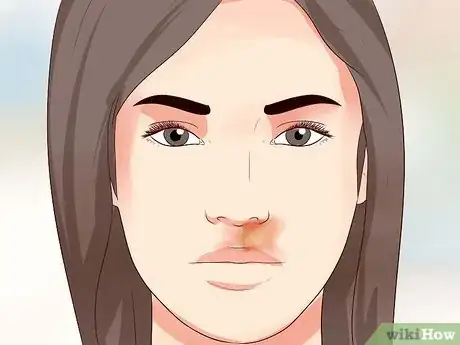
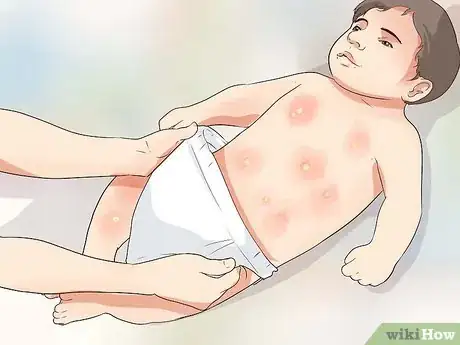
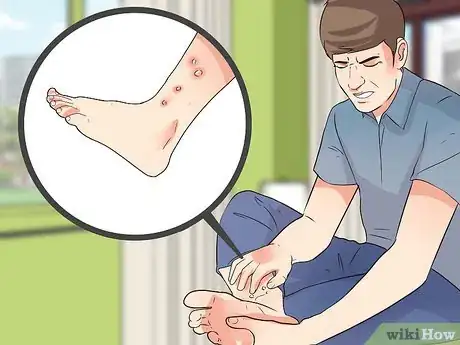
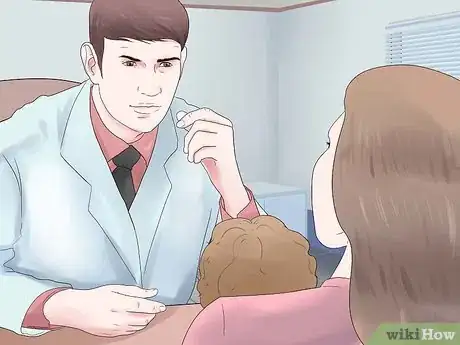

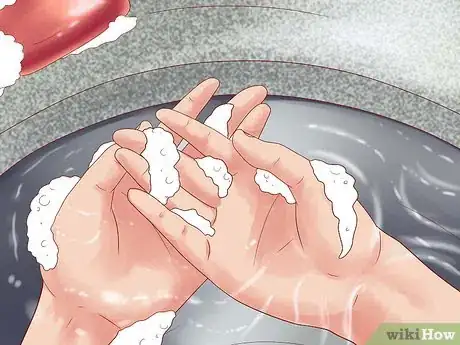
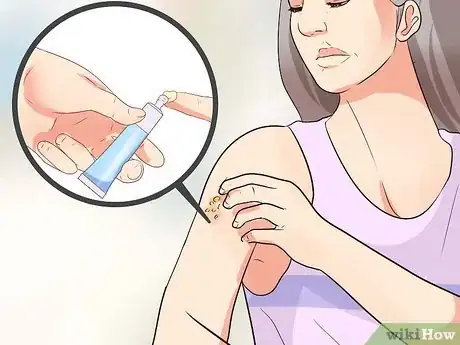
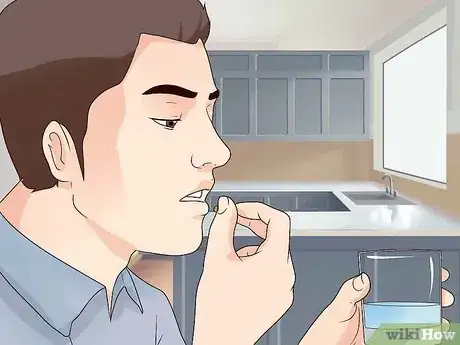


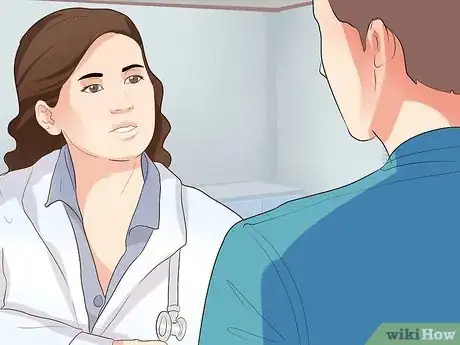


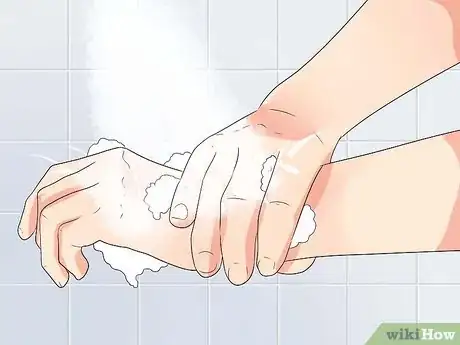


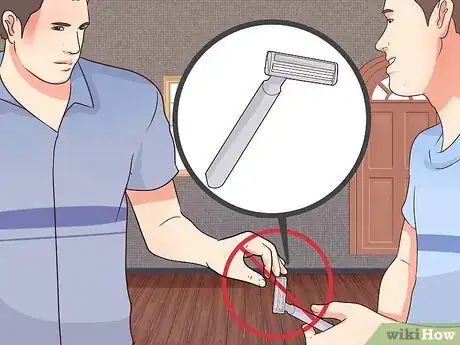






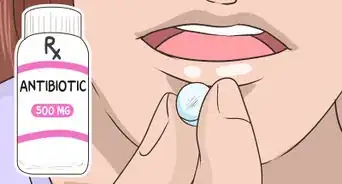
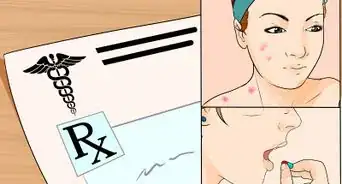




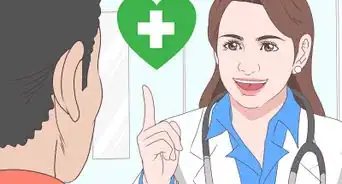












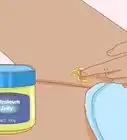



































Medical Disclaimer
The content of this article is not intended to be a substitute for professional medical advice, examination, diagnosis, or treatment. You should always contact your doctor or other qualified healthcare professional before starting, changing, or stopping any kind of health treatment.
Read More...